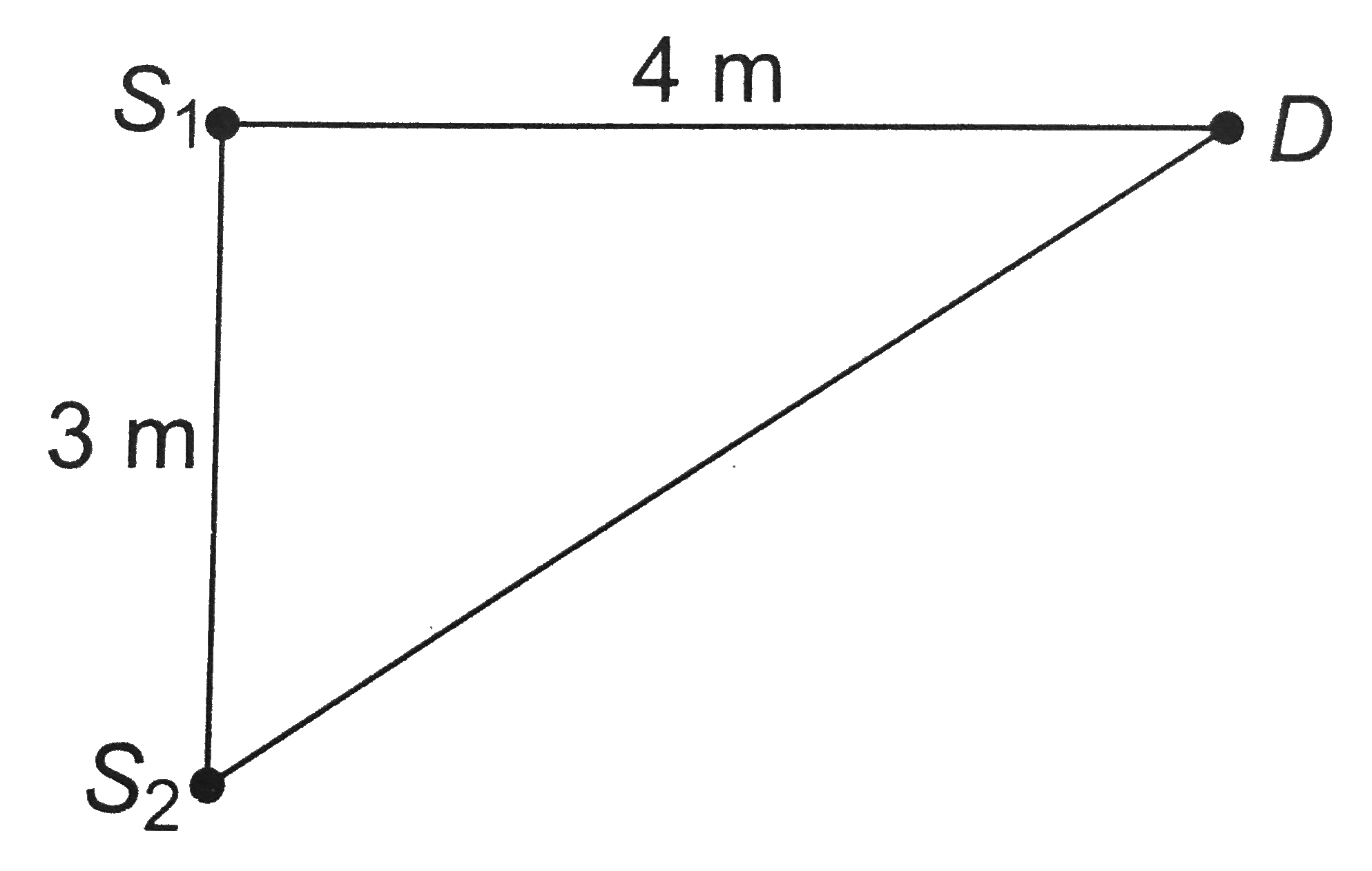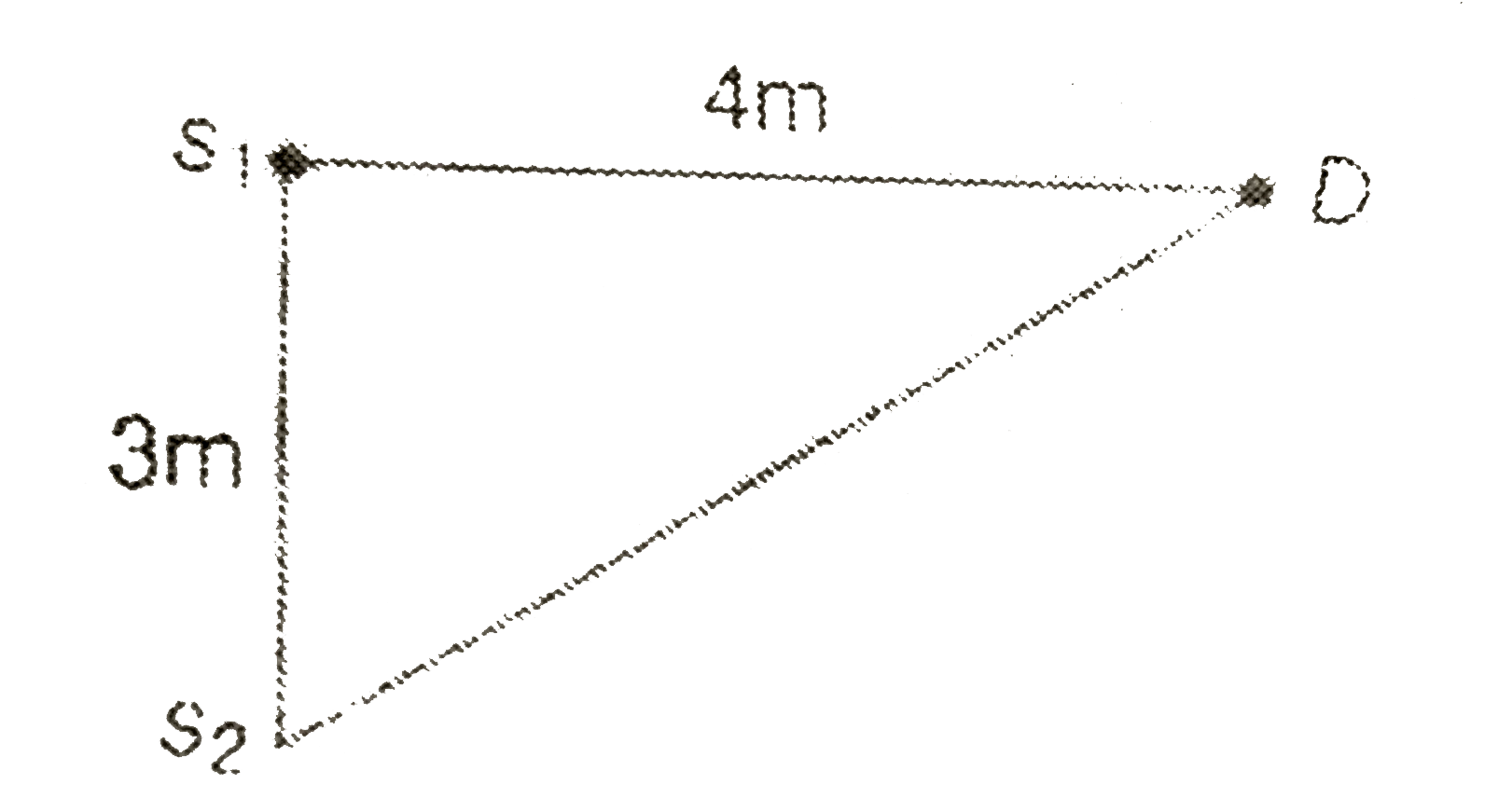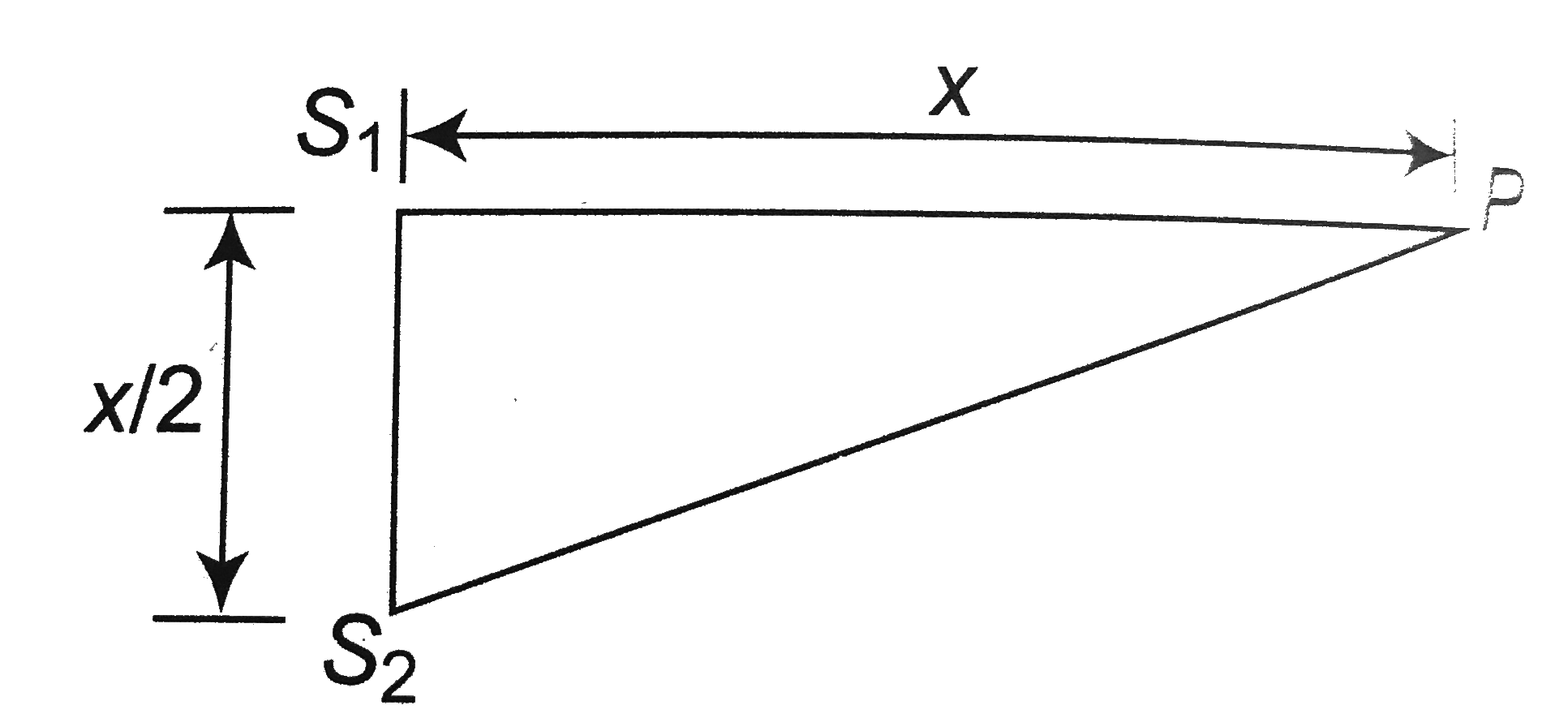Four monochromatic and coherent sources of light emitting waves in phase at placed on y axis at y = 0, a, 2a and 3a. If the intensity of wave reaching at point P far away on y axis from each of the source is almost the same and equal to I0, then the resultant intensity at P for a=λ8 is nI0. The value of [n] is.
Here [] is greatest integer funciton.
The correct Answer is:6
To solve the problem, we need to calculate the resultant intensity at point P due to the four coherent sources of light placed on the y-axis at positions y = 0, a, 2a, and 3a. Given that the distance a=λ8, we will find the value of n in the expression for the resultant intensity nI0.
1. Identify the Positions of the Sources:
- The sources are located at:
- Source 1: y1=0
- Source 2: y2=a
- Source 3: y3=2a
- Source 4: y4=3a
2. Calculate the Path Difference:
- The distance between each source is a=λ8.
- The path difference between any two sources is given by the distance between them. For example, between source 1 and source 2, the path difference is Δx=a=λ8.
3. Calculate the Phase Difference:
- The phase difference Δϕ between two sources can be calculated using:
Δϕ=2πλΔx
- For Δx=λ8:
Δϕ=2πλ⋅λ8=π4
4. Resultant Intensity Calculation:
- The intensity at point P from each source is I0.
- The resultant intensity IR from two sources with intensities I1 and I2 and a phase difference ϕ is given by:
IR=I1+I2+2√I1I2cos(ϕ)
- For sources 1 and 3 (which are separated by 2a):
- The phase difference is Δϕ=2×π4=π2.
- Thus, the resultant intensity from sources 1 and 3:
I13=I0+I0+2√I0I0cos(π2)=2I0
5. Calculate the Resultant Intensity from Sources 2 and 4:
- Similarly, for sources 2 and 4:
- The phase difference is also π2.
- Thus, the resultant intensity from sources 2 and 4:
I24=I0+I0+2√I0I0cos(π2)=2I0
6. Combine the Resultant Intensities:
- Now we have two resultant intensities:
- From sources 1 and 3: 2I0
- From sources 2 and 4: 2I0
- The resultant intensity at point P is:
IR=√(2I0)2+(2I0)2=√4I20+4I20=√8I20=2√2I0
7. Final Resultant Intensity:
- The total resultant intensity can be expressed as:
IR=4I0+2√2I0
- Using the approximation √2≈1.41:
IR≈4I0+2×1.41I0=4I0+2.82I0=6.82I0
8. Determine the Value of n:
- From the problem, we have IR=nI0.
- Thus, n≈6.82.
- The greatest integer function (n)=6.
Final Answer:
The value of (n) is 6.
- The sources are located at:
- Source 1: y1=0
- Source 2: y2=a
- Source 3: y3=2a
- Source 4: y4=3a
- The distance between each source is a=λ8.
- The path difference between any two sources is given by the distance between them. For example, between source 1 and source 2, the path difference is Δx=a=λ8.
- The phase difference Δϕ between two sources can be calculated using:
Δϕ=2πλΔx
- For Δx=λ8:
Δϕ=2πλ⋅λ8=π4
- The intensity at point P from each source is I0.
- The resultant intensity IR from two sources with intensities I1 and I2 and a phase difference ϕ is given by:
IR=I1+I2+2√I1I2cos(ϕ)
- For sources 1 and 3 (which are separated by 2a):
- The phase difference is Δϕ=2×π4=π2.
- Thus, the resultant intensity from sources 1 and 3:
I13=I0+I0+2√I0I0cos(π2)=2I0
- Similarly, for sources 2 and 4:
- The phase difference is also π2.
- Thus, the resultant intensity from sources 2 and 4:
I24=I0+I0+2√I0I0cos(π2)=2I0
- Now we have two resultant intensities:
- From sources 1 and 3: 2I0
- From sources 2 and 4: 2I0
- The resultant intensity at point P is:
IR=√(2I0)2+(2I0)2=√4I20+4I20=√8I20=2√2I0
- The total resultant intensity can be expressed as:
IR=4I0+2√2I0
- Using the approximation √2≈1.41:
IR≈4I0+2×1.41I0=4I0+2.82I0=6.82I0
- From the problem, we have IR=nI0.
- Thus, n≈6.82.
- The greatest integer function (n)=6.
The value of (n) is 6.
Topper's Solved these Questions
Similar Questions
Four monochromatic and coherent sources of light emitting waves in phase at placed on y axis at y = 0, a, 2a and 3a. If the intensity of wave reaching at point P far away on y axis from each of the source is almost the same and equal to I0, then the resultant intensity at P for a=λ8 is nI0. The value of [n] is.
Here [] is greatest integer funciton.
View SolutionTwo incoherent sources of light emitting light of intensity I0 and 3I0 interfere in a medium. Then the resultant intensity at any point will be
View Solution
Knowledge Check

In the figure the intensity of waves arriving at D from two coherent sources S1 and S2 is I0 The wavelength of the wave is λ=4m. Resultant intensity at D will be:A4I0BI0C2I0DzeroIn the figure , the intensity of waves arriving at D from two coherent soucrces s1ands2isI0. The wavelength of the wave is λ=4m . Resultant intensity at D will be
 A4l0Bl0C2l0Dzero
A4l0Bl0C2l0DzeroThere is an equilateral triangle ABC. Two monochromatic and coherent sources of light are placed at points A and B. Intensity of light from both the sources reaching the point C is same and equal to 2W/m2. Resultant intensity of light at point C
Ais 8W/m2Bis 4W/m2Cis zeroDcannot be determined with the given information
Two incoherent sources of light emitting light of intensity I0 and 3I0 interfere in a medium. Calculate, the resultant intensity at any point.
View SolutionThe intensity of interference waves in an interference pattern is same as I0. The resultant intensity at the point of observation will be
View Solution
The wavelength of the waves arriving at P from two coherent sources S1 and S2 is 4m, while intensity of each wave is I0. The resultant intensity at P is 2I0. Find the minimum value of S2P
View SolutionLight from two coherent sources of the same amplitude A and wavelength λ illuminates the screen. The intensity of the central maximum is I0. If the sources were incoherent, the intensity at the same point will be
View SolutionLight from two coherent sources of the same amplitude A and wavelength λ illuminates the screen. The intensity of the central maximum is I0. If the sources were incoherent, the intensity at the same point will be
View Solution
